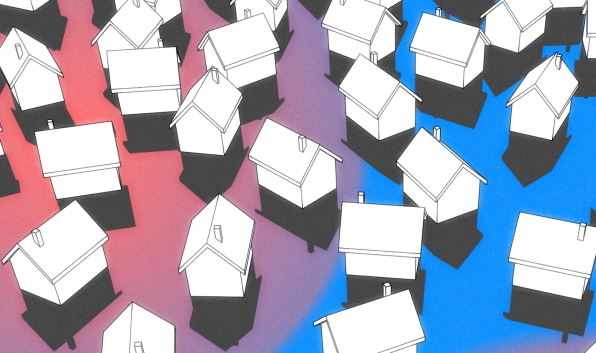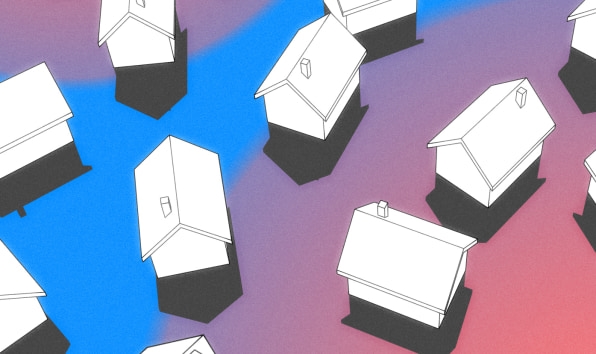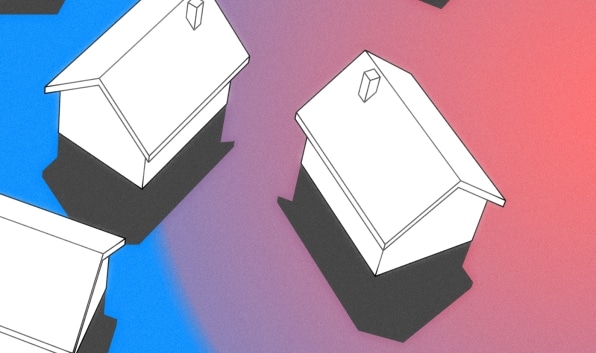Having a roof over one’s head sounds like it should be a basic right. And it should go without saying that that roof should come free of toxic mold, the possibility of sudden eviction, and rent too high to make monthly payments feasible. In the U.S., however, having a home—not to mention one without mold and with stability—is far from given.
But a proposal released on September 5 by People’s Action called “A National Homes Guarantee” lays out exactly how the U.S. could change that—ensuring homes for all.s In a country where more than 3 million families are experiencing homelessness, it’s a multifaceted task. The plan’s goals range from reinvestment in public housing and the creation of a national tenants’ bill of rights, to seeking reparations for historically racist housing policies like redlining and discrimination against people on rent subsidies and, most ambitiously, building 12 million new social housing units in the U.S.

The Homes Guarantee also insists on making new and currently available public housing options both environmentally friendly and safer for inhabitants. Updates like dimmer switches would let building residents better moderate their use of electricity, while larger buildings could install rooftop solar panels. Meanwhile, existing public housing would have to work on removing lead and toxic mold, and new buildings would need to be built with nontoxic and environmentally sound materials. (Concrete has an enormous carbon footprint. The proposal suggests “sustainably harvested wood.”)
Tara Raghuveer, the Housing Campaign Director at People’s Action and an organizer for poor and working-class tenants in Kansas City, where she’s based, acknowledges that the proposal is “radical.”
However, radical is in right now, says Raghuveer. “There seems to be an appetite…to do this kind of radical imagination and think about how the system can look completely different in the U.S.” Raghuveer and her colleagues have been encouraged so far by the positive reception from lawmakers to whom they’ve presented the plan in Congress.

Though the Homes Guarantee was just released, arriving at its final version was a long and involved process. It took multiple community organizers and visits to Capitol Hill, where the group “tested whether we would get laughed out of the room” for its bold ideas, says Raghuveer. They didn’t. In fact, in April, People’s Action hosted a briefing on some of their concepts for the Congressional Progressive Caucus, and “it went really well,” she says. It even prompted People’s Action to turn their vision into a formal policy proposal—the current iteration of the ambitious Homes Guarantee.
Since there are so many aspects of the Homes Guarantee—broken out into sections about building social housing, investing in public housing, protecting renters, paying reparations, ending real estate speculation, and establishing a people’s housing committee—Raghuveer says instead of trying to pass the Homes Guarantee as a single bill, she and her co-organizers will work on passing each part individually. But the most crucial part of the Homes Guarantee, she says, is developing the social housing, subsidized residences that aren’t subject to the speculation and appreciation most housing is today.
“For us, this is the major intervention that takes housing off the market and decommodifies it,” she says. The Homes Guarantee proposes taxing the appreciation of privately owned homes, while the 12 million new social housing units would put a massive number of new units off the speculation market entirely. The aim is to shift the paradigm—from homes as wealth stores to basic necessities.

However, there is an environmental risk inherent in so much building. While building 12 million new homes in the country isn’t exactly environmentally friendly (construction disrupts natural environments, and the making of building materials like steel entails high carbon emissions), the Homes Guarantee suggests long-term benefits could outweigh the initial costs.
“The people who are most impacted by the housing crisis are also the most impacted by the climate crisis,” says Raghuveer. They tend to be people of color living in structures less equipped to deal with catastrophic weather events, and have less money to help them relocate if displaced by the changing climate. Plus, the Homes Guarantee suggests training in “green construction” could drive workers to become skilled in energy-efficient building—a skill that could be used in many construction projects going forward.
“The bigger picture is that climate change is the biggest driver of displacement in the world right now,” says Raghuveer. Between refugees from other countries and people fleeing storms within the U.S., there’s a need for more places to live. “But already, we have a shortage of affordable, accessible, safe, sustainable places,” adds Raghuveer. “There is no climate justice without housing justice, and vice versa.”
The group’s next step is turning housing access into a 2020 campaign issue. “We want to work with candidates at all levels of government,” says Raghuveer. “We want to ensure that the frame of the Homes Guarantee . . . is being deliberated during the race.”
(32)